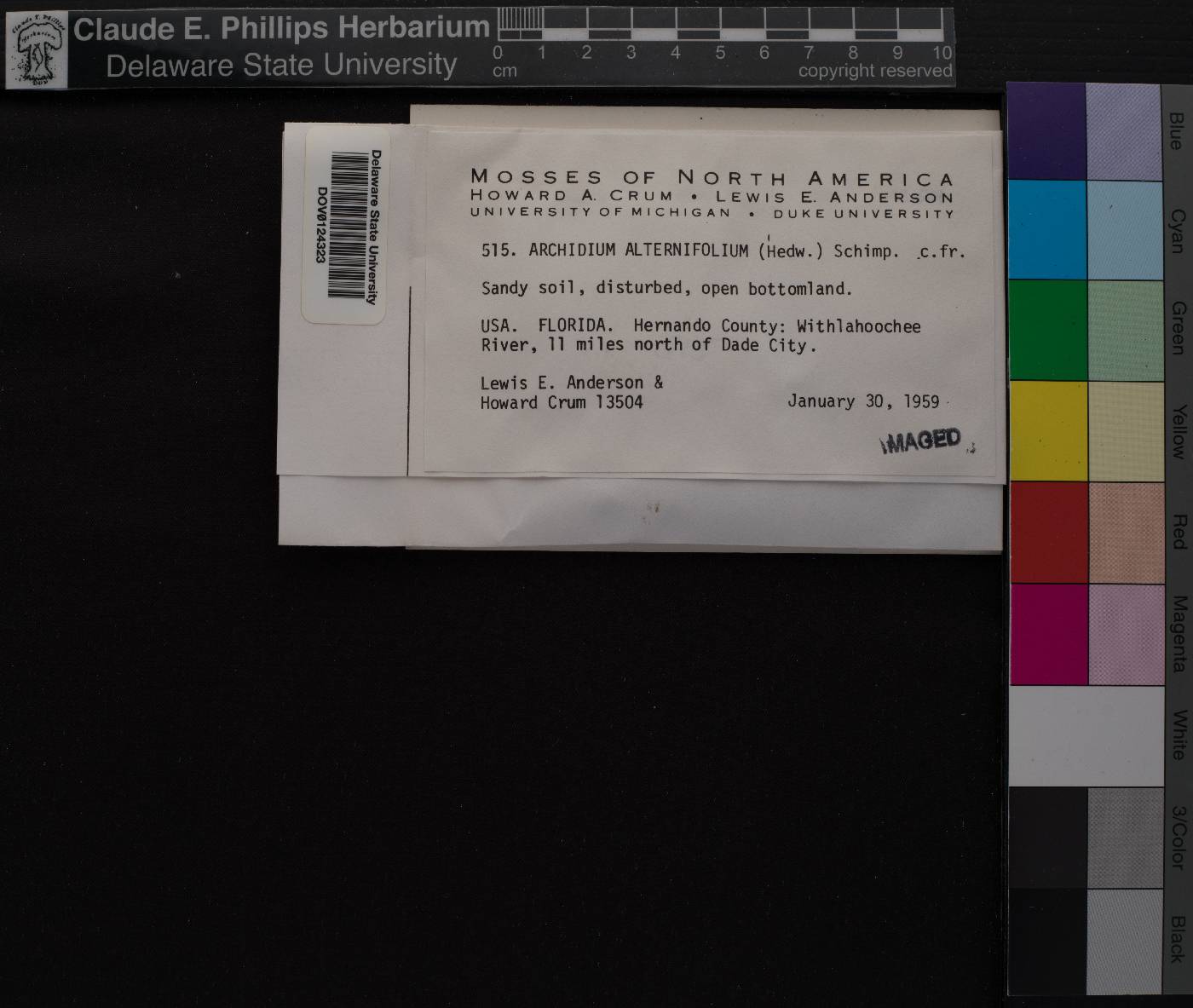Archidium
|
Family: Archidiaceae |
Plants mostly green. Stems terete, 1-20 mm. Leaves of distal portions of stems and of perichaetia ovate, ovate-lanceolate, linear-lanceolate to triangular, often reduced and distant in proximal portion of stem, flat or somewhat concave, apex acute to acuminate, sometimes incurved or rarely secund, margins plane, recurved or rarely incurved, distal margins smooth to finely serrulate; costa weak and not reaching apex or sometimes absent, to more often strong, single, percurrent to excurrent in a hairpoint; laminal areolation uniform to somewhat differentiated, cells mostly rectangular to rhomboidal, sometimes irregular in median and distal portions, rectangular and rhomboidal cells mixed with short sub-quadrate cells, alar cells similar to adjacent cells or differentiated, hyaline, wide-rectangular to quadrate. Sexual condition autoicous, paroicous or synoicous, antheridia often naked in axils of distal stem leaves or outer perichaetial leaves, sometimes enclosed in short shoots with small leaves (bracts). Perichaetial leaves often larger and more variable in shape than stem leaves, sometimes broadly ovate to elliptic. Capsule immersed in perichaetial leaves, brown or golden at maturity. Spores spherical to polyhedral, pale yellow to yellow-brown, golden, orange or red-orange, smooth to finely papillose. Superficially, species of Archidium can be mistaken for Pleuridium, and many collections of the latter genus have been identified as Archidium. Both genera consist of very small mosses that typically colonize soil in open sites and have ovate-lanceolate to lanceolate leaves, which are often subulate. However, species of Pleuridium have leaves that are often strongly shouldered and long-subulate, a seta, capsules that are typically ovoid (rather than globose) with an apiculate tip, a calyptra, and smaller, more numerous spores. In the descriptions, spore diameters are given for the longest axis (following J. A. Snider 1975).
|

